Cleft craniofacial conditions, such as cleft lip and palate, present unique challenges for individuals in India. However, with advancements in medical technology and surgical techniques, there have been significant improvements in the treatment and management of these conditions. This article explores the traditional challenges faced by individuals with cleft craniofacial conditions in India and highlights the modern advancements in their treatment.
Limited Access to Healthcare:
One of the traditional challenges faced by individuals with cleft craniofacial conditions in India is limited access to specialized healthcare services. Many individuals in rural areas may not have access to well-equipped hospitals or trained surgeons. However, efforts have been made to bridge this gap by establishing cleft craniofacial clinics and outreach programs in various regions of India, ensuring that more individuals can receive timely treatment.
Sociocultural Stigma:
Individuals with cleft craniofacial conditions often face social stigma and discrimination in India. Traditionally, these conditions were associated with superstitions and misconceptions. However, awareness campaigns, advocacy groups, and community-based interventions have played a crucial role in dispelling these myths and reducing societal stigma.
Language and Speech Difficulties:
Cleft craniofacial conditions can affect speech development and language acquisition. Children with these conditions may experience difficulties in articulation and pronunciation, leading to communication challenges. Speech therapy programs have been implemented in India to address these issues and provide individuals with the necessary support to improve their communication skills.
Surgical Advancements:
In recent years, there have been remarkable advancements in surgical techniques for cleft craniofacial conditions. Modern approaches, such as pre-surgical orthopedics, primary lip and palate repairs, and secondary corrective surgeries, have significantly improved the outcomes for patients. These advancements have resulted in better facial aesthetics, improved speech, and reduced postoperative complications.
Multidisciplinary Care:
The treatment of cleft craniofacial conditions requires a multidisciplinary approach involving various healthcare professionals, including surgeons, dentists, orthodontists, speech therapists, and psychologists. In India, there has been a growing recognition of the importance of multidisciplinary care, leading to the establishment of comprehensive cleft craniofacial teams. These teams collaborate to provide holistic care and support to individuals with these conditions.
Technological Innovations:
Technological innovations have revolutionized the field of cleft craniofacial treatment in India. Advanced imaging techniques, such as 3D imaging and virtual surgical planning, have enhanced surgical precision and improved treatment outcomes. Additionally, the development of 3D printing technology has facilitated the production of customized surgical guides and prosthetics, further enhancing the surgical process.
While traditional challenges persist, the landscape of cleft craniofacial treatment in India has seen significant advancements. Improved access to healthcare, reduced societal stigma, advancements in surgical techniques, multidisciplinary care, and technological innovations have collectively transformed the treatment outcomes for individuals with cleft craniofacial conditions. With continued efforts and awareness, India is making significant progress in providing comprehensive care and support to those affected by these conditions.
